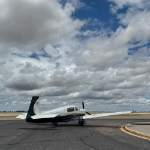What's the best strobe flash pattern?
What's the best strobe flash pattern?
12 members have voted
-
Members Online
- Stealth Mooney
- Wingover
- gabez
- bluehighwayflyer
- Fritz1
- DXB
- Hoeschen
- toto
- TCC
- takair
- McMooney
- redrider54
- Guilly
- Brian2034
- CCAS
- cbarry
- steeve555
- redbaron1982
- good2eat
- Schllc
- pirate
- alextstone
- atpdave
- 47U
- BillyT0020
- jennifashby
- chrisburdzy98
- VetRepp
- shawnd
- Aaviationist
- AndreiC
- Jim F
- Emmet
- bigmo
- Kelpro999
- Rick Junkin
- Marc_B
- Gflight
- Jose Jo
- hammdo
- Justin Schmidt
- Mmrkulic
- Echo
- richardbrochu27
- raymondscott0321
- Mobius708
- amillet


Recommended Posts
Join the conversation
You can post now and register later. If you have an account, sign in now to post with your account.